Our Team

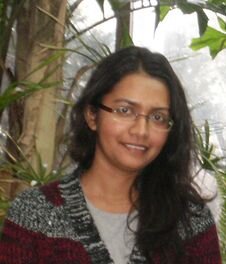
Kumkum Azad
My research is characterizing fungal endophyte strains that confer salt tolerance to plants.
Saskatchewan has naturally salty soils, and human activities are also associated with soil salinization. Both cause reduced crop yields.
Endophyte technology has the potential to improve agricultural yield without using genetically modified organisms.

Tim Repas
My TSTH20-1 project has progressed to mesocosm growth studies, since preliminary results strongly suggested this fungus was able to metabolize residual bitumen in the tailing sands. We expect this will provide a practical strategy for establishing early successional plant communities on tailing sands. We hope to take this to field trials in 2013.
I am now funded by an NSERC Industrial Post-Graduate Scholarship, in partnership with Novozymes BioAg. I am characterizing a novel strain on phosphate-solubilizing fungus, previously isolated by the Kaminskyj Endophyte group.
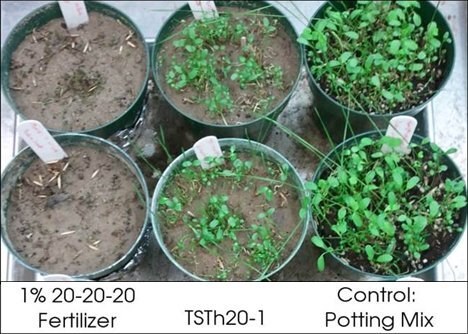


Savanna Menke
I am a Centennial Collegiate student entering grade 12. My first project was characterizing nutrient requirements of endophyte fungi with Tim Repas. Now I work on the saline endophyte project, helping with analysis of several dozen fungal isolates and their effect on plant salinity tolerance.

Laurie Johnson
Terrestrial plants use symbioses with endophyte and mycorrhizal fungi to enhance survival. One group of endophyte fungi helps plants to survive in harsh environments, for example, being specialized for cold or dry or low-nutrient conditions. My project studied endophytes from the Canadian High Arctic and from local deserts like the Great Sand Hills of southwestern Saskatchewan. Wheat that had been colonized by specific endophyte germinated faster and grew significantly larger within the first week after seeding. These isolates may help agriculture without added chemicals.


Yang (Lilia) Li
Taraxacum officinale (dandelion) lateral roots form arbuscular mycorrhizae (AM) as well as other root-fungal endophyte associations. I am examining roots containing multiple types of fungi using light, confocal epifluorescence and electron microscopy (EM).
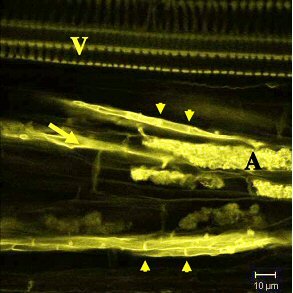
Image above: confocal fluorescence microscopy of dandelion roots stained with lactofuchsin shows an aseptate AM hypha (arrow) that has produced arbuscules (A) near the vascular cylinder (V) that forms the core of the root. In addition, septate endophytic hyphae (arrowheads indicate septa) can be found throughout the root cortex. AM and septate fungi often occur close together. In future these species will be identified using molecular methods. This is the first ultrastructural study of dandelion lateral roots. These have closely packed cells in the peripheral cortex, and gaps between cells near the vascular cylinder, consistent with variations in AM morphology. EM will be used to characterize interactions between plant and fungal cells.

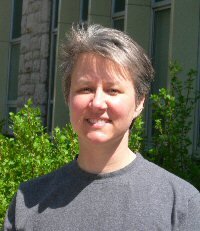
Catherine Peters
Truelove Lowland, on Devon Island in the Canadian High Arctic archipelago, has been studied since the 1970s as a model for tundra ecology. However, despite intensive study in the late 1980s (Bledsoe et al. 1990 Can J Bot 68: 1848-1856) no plants were found to host endorhizal fungal associations. Recent work in our lab (Ormbsy et al. 2007 Can J Bot, in press) showed that endorhizal fungi were more common in 2004 and 2006 than in previous years, at least for Asteraceae collected on Axel Heiberg Island. Using plant and soil samples collected at Truelove in 2005 from about 20 species, and sensitive confocal fluorescent microscopy methods for visualizing endorhizal fungi, I will be revisiting whether endorhizal fungi are indeed absent from Truelove.
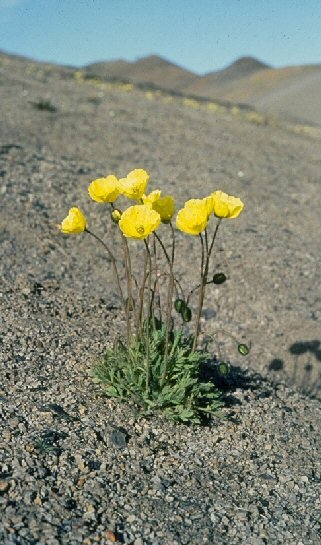

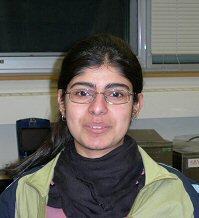
Fakhra Shahid
Equisetum (horsetails) is the sole remaining genus from a group of primitive plants that were abundant in the Carboniferous period. Today Equisetum is a dominant understory plant in boreal and mixed forests, although the inset shows it can also colonize disturbed sites. I am continuing work to characterize fungi associated with Equisetum roots, in order to better understand their role(s) in forest soil microbial ecology.
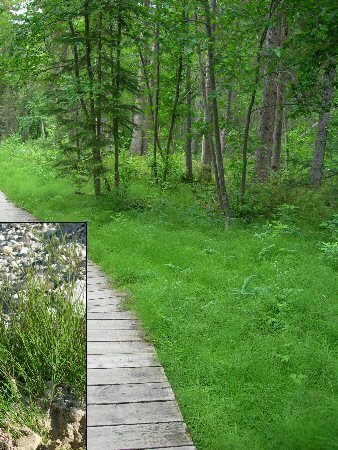


Dominic Olver
I worked with Kumkum Azad to characterize salt tolerance endophytes. My project will compare salinity of the environment compared to plant fluids.

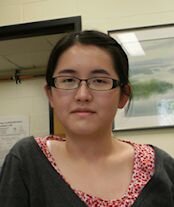
Huimin Zhang
I worked with Kumkum Azad on characterizing fungal endophytes that contributed to salt tolerance.

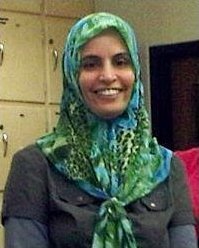
Dr. Zakia Boubakir
I lead the Saline Endophyte group, characterizing fungal strains that were isolated from plants that naturally grew in Mosaic Co tailings management areas (TMAs), which have high levels of sodium chloride (table salt). After earning my PhD from Braunschweig University in Germany, I had a 3-year post-doctoral fellowship at the Plant Biotechnology Institute in Saskatoon before joining the Kaminskyj lab.
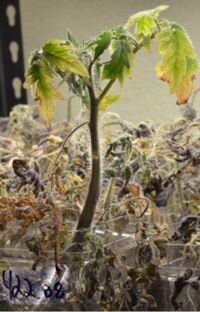
This image is of a tomato seedling that was forgotten (and not watered) for nearly four weeks in a plant growth room. The label “422.08” indicates it was colonized with one of our endophyte strains. Seven weeks later this tomato superhero has three young fruit!


Liz Cronin
I am a U Vic Co-op student, spending my final undergrad term studying fungal endophytes and salt tolerance. I am working with Zakia to rescreen and confirm results from 2012.
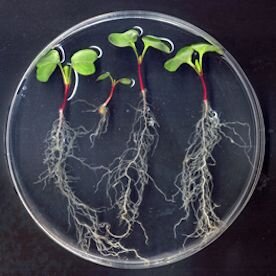
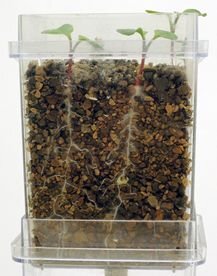
The image on the left shows young radish seedlings, chosen for their extremely delicate roots. After 6 days in our new DE-granule growth medium, we can remove the plants without damage to the roots (image on the right).

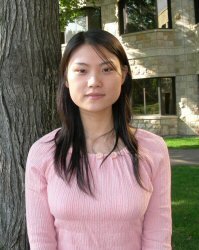
Xiaohui Bao
Arbuscular mycorrhizae (AM) are associated with ~80% of terrestrial plant species, where they contribute to plant survival and competitiveness by supplying minerals in exchange for sugars produced by photosynthesis. Our lab has shown that AM and other fungal root associates are common even in extreme environments. I am studying root fungi associated with plants like dandelions that are able to grow on tar sands following extraction, a process that intuitively seems likely to have removed all possible soil microbes. Plants that can colonize this extreme environment may be useful for re-establishing soil micro-ecology in a relatively natural and cost-effective manner.

The Athabasca Tar Sands are a vast hydrocarbon reserve in western Canada that are a natural model system to understanding how mycorrhizal fungi respond to petrochemicals. The hydrocarbons are extracted using solvents and hot water, after which the sand is remediated to permit revegetation. I am studying mycorrhizal fungi associated with Taraxacum officinale (common dandelion) collected from unextracted, extracted, and remediated sites. This photo shows that, following extraction of bituminous tar, clean mineral sand has become colonized by dandelions and sowthistle. Surprisingly, although the extraction process was expected to severely deplete the soil microflora, preliminary studies showed that the dandelion roots have abundant AM typical of unextracted sites.

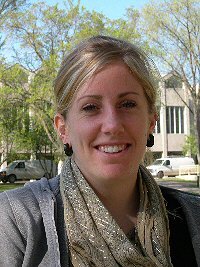
Xanthe Walker
Ranunculus (buttercups) are small herbaceous plants found from the Prairies to the High Arctic, where they are common in moist to marshy sites. Mycorrhizal fungi have seldom been reported from plants growing on wet soils, however our lab showed (Allen et al. 2006 Can J Bot 84: 1094-1100) these fungi are abundant in High Arctic Ranunculus. My project is to characterize endorhizal fungi in Ranunculus from diverse Arctic and Prairie sites.
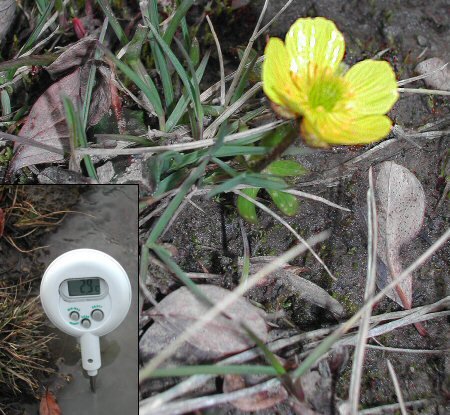
The image shows Ranunculus nivalis from Axel Heiberg Island, 80ºN, growing by a stream with a temperature of 2.9ºC.


Nathan Allen
Arctic plants endure harsh conditions but relatively little is known about their mycorrhizae, due to difficulty of access to remote regions. My current project is to compare arbuscular mycorrhizae (AM) of temperate (Taraxacum officinale) and arctic (T. arcticum and T. hyparcticum) dandelion, imaged with confocal laser scanning microscopy (CLSM).
This CLSM fluorescence image shows a Taraxacum officinale arbuscular mycorrhiza stained with lactofuchsin. Click the above to play the movie (22 MB). (Larger, crisper still)
This arctic dandelion was collected on Axel Heiberg Island in the Canadian Arctic archipelago.
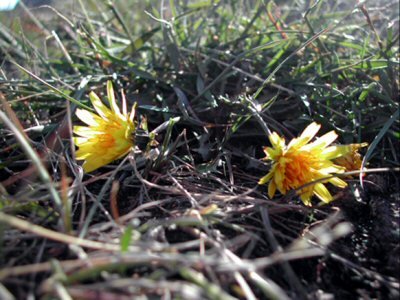
This arctic dandelion was collected on Axel Heiberg Island in the Canadian Arctic archipelago.
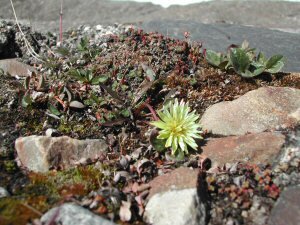

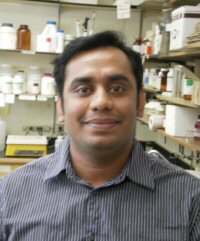
Kausar Alam
My PhD research examined regulatory aspects of galactose metabolism and galactofuranose biosynthesis using gene deletion, overexpression, and complementation with site-directed mutants at the UGM catalytic site. Likely due to energy constraints, synthesis of the major wall carbohydrates, alpha- and beta-glucan (40% each) appears to be co-regulated.

Beginning Jan 2014, I will be a post-doctoral fellow with Dr. Ron Geyer, Pathology, U Saskatchewan


Jill Shengnan Li
In humans, selenium (Se) is a micronutrient that is toxic at higher levels. My PhD project relates to Se metabolism in the filamentous fungus Trichoderma harzianum.
I am studying the details of Se metabolism using synchrotron spectroscopy with Prof Ingrid Pickering, Geological Sciences, U Saskatchewan, plus cell and molecular methods with Prof Susan Kaminskyj, Biology, U Saskatchewan.
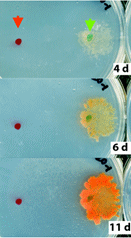
Figure on right Trichoderma harzianum inoculated at the green arrow, can scavenge selenium ions placed at the red arrow, to form orange nanoparticles

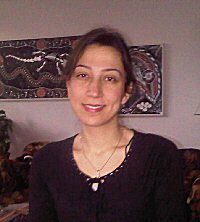
Fatemeh Farazkhorasani
I will be using metallic nanoparticles (NPs) as an probe for surface enhanced Raman spectroscopy (SERS), a high sensitivity and high spatial resolution chemical analysis method. We expect that SERS-NP analysis will provide results that are complementary to Fourier transform infrared spectroscopy.
Our paper on gold nanoparticles (Prusinkiewicz, Farazkhorasani et al 2012 Analyst 137: 4934-42) was chosen for the cover image of that issue.


Sharmin Afroz
I am studying the UDP-galactofuranose transporter, which is expected to function downstream of UgmA. UDP-galactofuranose is synthesized in the cytoplasm, and must be transported into a membrane-bound compartment, likely the Golgi equivalent, prior to galactofuranose incorporation into the cell wall.
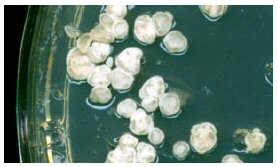

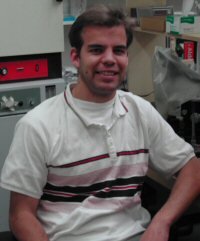
Geoff Bray
Aspergillus nidulans hypB5 has a temperature sensitive morphogenetic defect. Its hyphae grow like wildtype strains at 28°C but not at 42°C. The hypB5 defect can be partially complemented by a Sec7 domain protein, cloned by Yi Yang during her M. Sc. research. I am working to resolve some questions remaining about the relationship between AnSec7 and hypB.
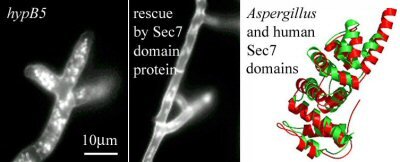

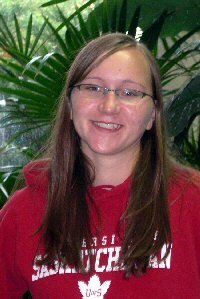
Miryha Retzlaff
My research is continuing work begun by Michelle Hubbard, studying the relationship between endomembrane arrays and hyphal morphology in Aspergillus nidulans. This image is a confocal micrograph of a living A. nidulans morphogenesis mutant colony after 20 h growth, stained with the endomembrane selective dye FM4-64.
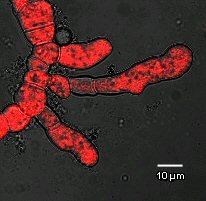


Sanjaya Ekanayake
I am studying the relationship between endomembrane array dynamics and hyphal morphology in Aspergillus nidulans. This image is a confocal micrograph of actively growing A. nidulans hyphal tips stained with the endomembrane selective dye FM4-64.
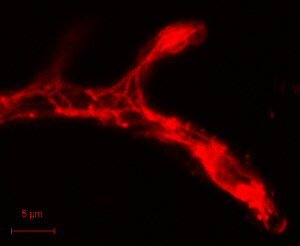


Sean Xiaoxiao He
My research is focused on alpha-glucan metabolism related to cell wall biosynthesis. Several deletion and overexpression strains display unusual phenotypes in shaken liquid culture that are distinct from their growth on agar medium.
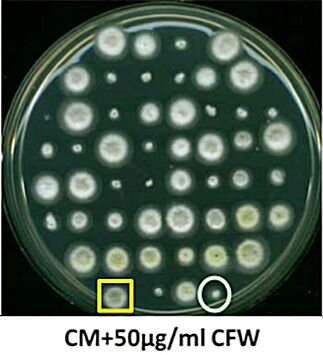
Fig 1 shows meiotic progeny from a mating between AXE5 (CFW-resistant, yellow square) and AXM5 (CFW-sensitive, green oval) wild type. For 166 analyzed, CFW resistance:sensitivity was 81:85, for all three spore colours (white, chartreuse, and green)
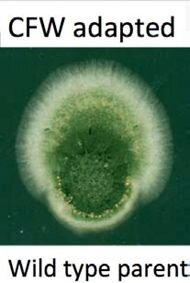
Fig 2 shows a CFW mutant (AXE5, compared to wildtype strain (P2)


Martin Prusinkiewicz
I am currently an M.Sc. candidate with Troy Harkness, Anatomy & Cell Biology, U of S.
The chemical and biological activity of NPs depends on their composition, size, and location. When I was with the Kaminskyj lab, we were developing methods for growing NPs in fungal cells. We were combining light and electron microscopy to assess where the NPs form under different biosynthesis conditions, and whether they affect cell physiology.

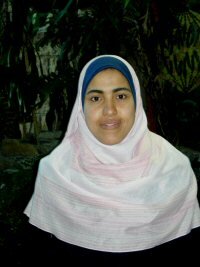
Amira El-Ganiny
I am studying two enzymes in the UDP-galactofuranose biosynthesis pathway: UPD-glucose-4-epimerase (UgeA) and UDP-galactopyranose mutase (UgmA). Galactofuranose is found in the cell walls of many microorganisms including fungi. If inhibitors can be developed against these enzymes, they could be effective antifungal drugs.


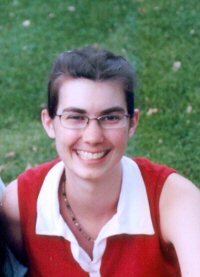
Robyn Pollock
Fish in the order Ostariophyi have specialized epidermal cells known as alarm substance cells (ASCs). Alarm substance is released when ASCs are ruptured. Nearby conspecific fish use alarm substance as an indication of predation risk, leading to antipredator behaviour (e.g. dashing, freezing, schooling). Recently, however, we discovered that ASCs may also have an antipathogen function.
My research examines ASC investment in fathead minnows (Pimephales promelas), a model Ostariophysan, throughout the year and whether exposure to a pathogenic water mold (Saprolegnia ferax) influences ASC investment. I will also examine how intra-population differences, virulence of the pathogen, and pathogen density may affect ASC investment in fathead minnows. My work is co-supervised with Dr. Doug Chivers (Department of Biology).
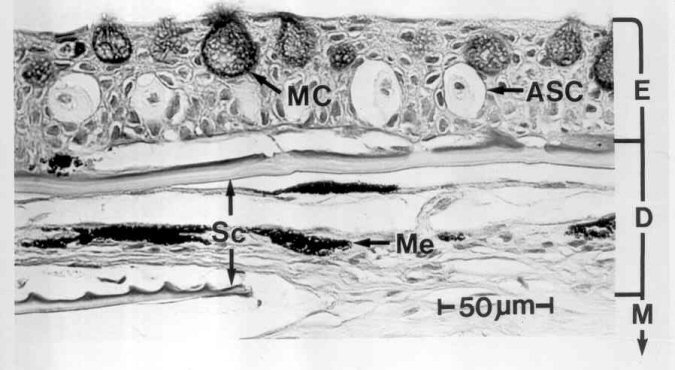

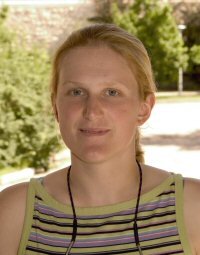
Michelle Hubbard
Fungal tip growth uses targeted secretion of wall forming materials at the hyphal tip to produce tubular cells called hyphae. These materials are synthesized and transported within the hypha by components of the endomembrane system: the endoplasmic reticulum (ER), Golgi body equivalents (GEs), vacuoles and vesicles. Organization and motility of endomembrane cargo requires F-actin and microtubules, components of the cytoskeleton.
Laser scanning confocal epifluorescence microscopy is a superb tool for studying growth dynamics. I am using fluorescent-protein tagged gene products and fluorescent chemical probes to study endomembranes and cytoplasmic microtubules in growing Aspergillus hyphae.
The images below show relatively stationary FM 4-64 stained endomembranes (red) and relatively motile granules GFP-tagged sodVIC (green, in a strain generated by Andy Breakspeare during his PhD research in Susan Assinder’s lab, Dept Biological Sciences, Univ Wales-Bangor) that localize to fungal Golgi equivalents.
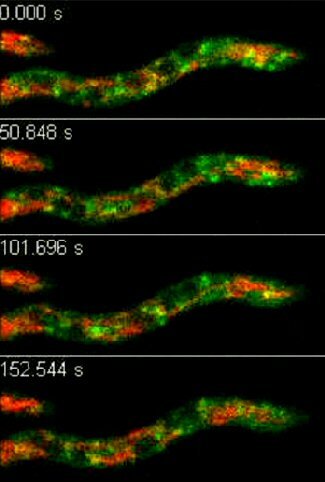

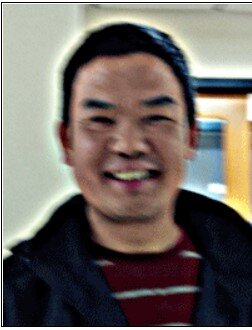
Alex Shi
My project was to complete the sequence annotation for hypA, including 5’RACE before there was an Aspergillus nidulans genome sequence, and knockout analysis.

